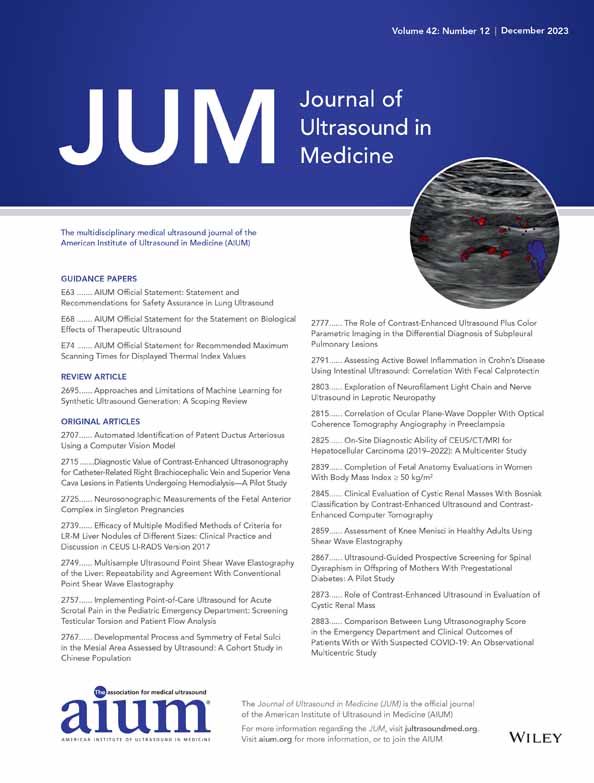Developmental Process and Symmetry of Fetal Sulci in the Mesial Area Assessed by Ultrasound
A Cohort Study in Chinese Population
This study was supported by ‘Capital's Funds for Health Improvement and Research’ (CFH 2020-2-4074). The authors have no conflicts of interest.
Abstract
Objective
We aimed to investigate the progression of cortical development in Chinese population and to determine the rate of isolated asymmetric cortical development. We also explored the outcomes of these fetuses and determined whether cortical asymmetry represents normal individual physiological variation.
Methods
Our observational cohort study included 456 healthy singleton pregnant women who visited Peking University First Hospital between September 2020 and December 2021. We evaluated the progression and symmetry of the parieto-occipital sulcus, calcarine sulcus, and cingulate sulcus using a scoring system during routine fetal ultrasound examinations. The outcomes of the included fetuses after birth were assessed using the Ages and Stages Questionnaire, Third Edition (ASQ-3).
Results
The median gestational ages at which the parieto-occipital, calcarine, and cingulate sulci reached grade 1 were 22, 22, and 26 weeks, respectively. Among 456 included fetuses, 426 showed symmetric cortical development and 30 showed asymmetric cortical development during ultrasound examination. Fetuses with asymmetric cortical development underwent ‘catch-up growth’ and developed to the same grade in 2–6 weeks. All fetuses with symmetric or asymmetric cortical development had normal neurodevelopment after birth according to ASQ-3 assessment.
Conclusion
The gestational age at which the parieto-occipital, calcarine, and cingulate sulci can be detected using ultrasound varies in different studies. Racial differences may be present in cortical development. Normal fetuses may physiologically have mildly asymmetric cortical development in the mesial area.
Open Research
Data Availability Statement
The data that support the findings of this study are available from the corresponding author upon reasonable request.




